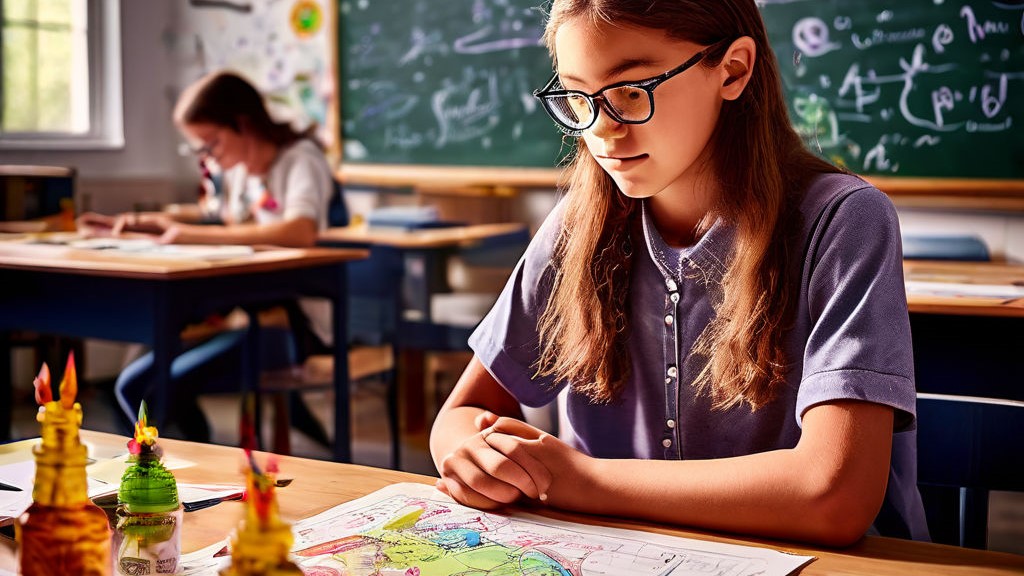Understanding how we learn best is fundamental to achieving academic success. Middle school is a critical period when students transition from foundational learning to more complex and abstract concepts. Discovering one’s learning style early on can significantly enhance this transition, making the learning process more effective and enjoyable. Learning styles generally fall into four categories: visual, auditory, kinesthetic, and reading/writing. Each of these styles represents a different way in which individuals perceive, process, and retain information. Onward360’s Learning Style Questionnaire will help you discover your unique style of learning. Click here to access the questionnaire.
Visual Learners
Visual learners thrive on seeing information. They benefit greatly from diagrams, charts, videos, and written instructions. These learners often remember things better when they can visualize the concept or see a demonstration. For example, in a science class, a visual learner might understand a process better by watching a video or looking at a detailed diagram rather than listening to a verbal explanation. Visual learners often use color-coding, mind maps, and other visual aids to organize information effectively.
Auditory Learners
Auditory learners, on the other hand, grasp information best when they hear it. They benefit from lectures, discussions, podcasts, and verbal instructions. These learners often excel in activities that involve listening and speaking, such as group discussions and oral presentations. In subjects like language arts, auditory learners might find that listening to a story or discussing a book helps them comprehend and remember details better than reading silently. Repetition through listening and speaking is key for these learners.
Kinesthetic Learners
Kinesthetic learners, or tactile learners, learn best through hands-on experiences. They need to engage physically with the material, using movement and touch. These learners excel in laboratory experiments, building models, and performing activities that require physical participation. For instance, in a history class, a kinesthetic learner might understand historical events better by role-playing or creating a physical timeline. They often find that traditional lectures and reading assignments are less effective unless they can incorporate some form of physical activity into their study routine.
Reading/Writing Learners
Reading/writing learners prefer interacting with text. They learn best through reading and writing activities. These learners excel when given written materials to read and are effective note-takers. They benefit from rewriting notes, reading textbooks, and creating lists. For example, in a mathematics class, a reading/writing learner might better understand a concept by reading detailed explanations and writing out practice problems rather than relying solely on verbal instruction or visual aids. This style suits traditional educational methods, where reading and writing are fundamental.
The Benefits of Discovering Your Learning Style Early
Identifying one’s learning style early, particularly during middle school, can set the stage for long-term academic success. This self-awareness allows students to tailor their study habits and learning strategies to match their preferred learning method, leading to a more efficient and enjoyable educational experience.
Personalized Learning
When students understand their learning style, they can personalize their learning strategies to suit their needs. For example, a visual learner can incorporate more diagrams and videos into their study sessions, while a kinesthetic learner can seek out interactive activities that involve physical engagement. This personalized approach can make learning more engaging and less frustrating, leading to better retention of information and improved academic performance.
Increased Confidence
Understanding how they learn best can boost students’ confidence. When students know the techniques that work for them, they can approach new material with a sense of competence and self-assurance. This confidence can reduce anxiety and improve their willingness to tackle challenging subjects, knowing they have the tools to understand and master the content.
Enhanced Motivation
When learning feels more natural and less forced, students are more likely to stay motivated and engaged. Discovering their learning style can make schoolwork feel less like a chore and more like an enjoyable and rewarding activity. This increased motivation can lead to higher levels of participation and enthusiasm in the classroom, further enhancing their academic experience.
Better Time Management
Knowing their learning style helps students use their study time more effectively. For example, an auditory learner might choose to listen to recorded lectures or discussions while doing chores, thus multitasking and making efficient use of their time. A reading/writing learner might organize their study schedule around periods when they can quietly read and take notes. Effective time management is crucial in middle school, where students begin to juggle multiple subjects and extracurricular activities.
Conclusion
Discovering your learning style is a crucial step towards academic success, particularly during the transformative years of middle school. By understanding whether they are visual, auditory, kinesthetic, or reading/writing learners, students can adopt learning strategies that play to their strengths, making education a more effective and enjoyable journey. This self-awareness leads to personalized learning, increased confidence, enhanced motivation, and better time management. Ultimately, knowing how to learn best equips students with the tools they need to excel academically and beyond.

